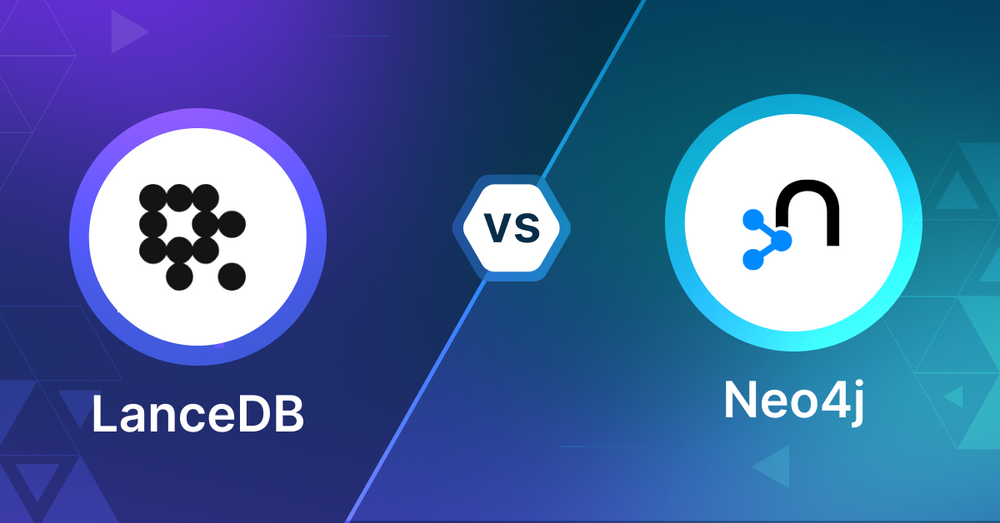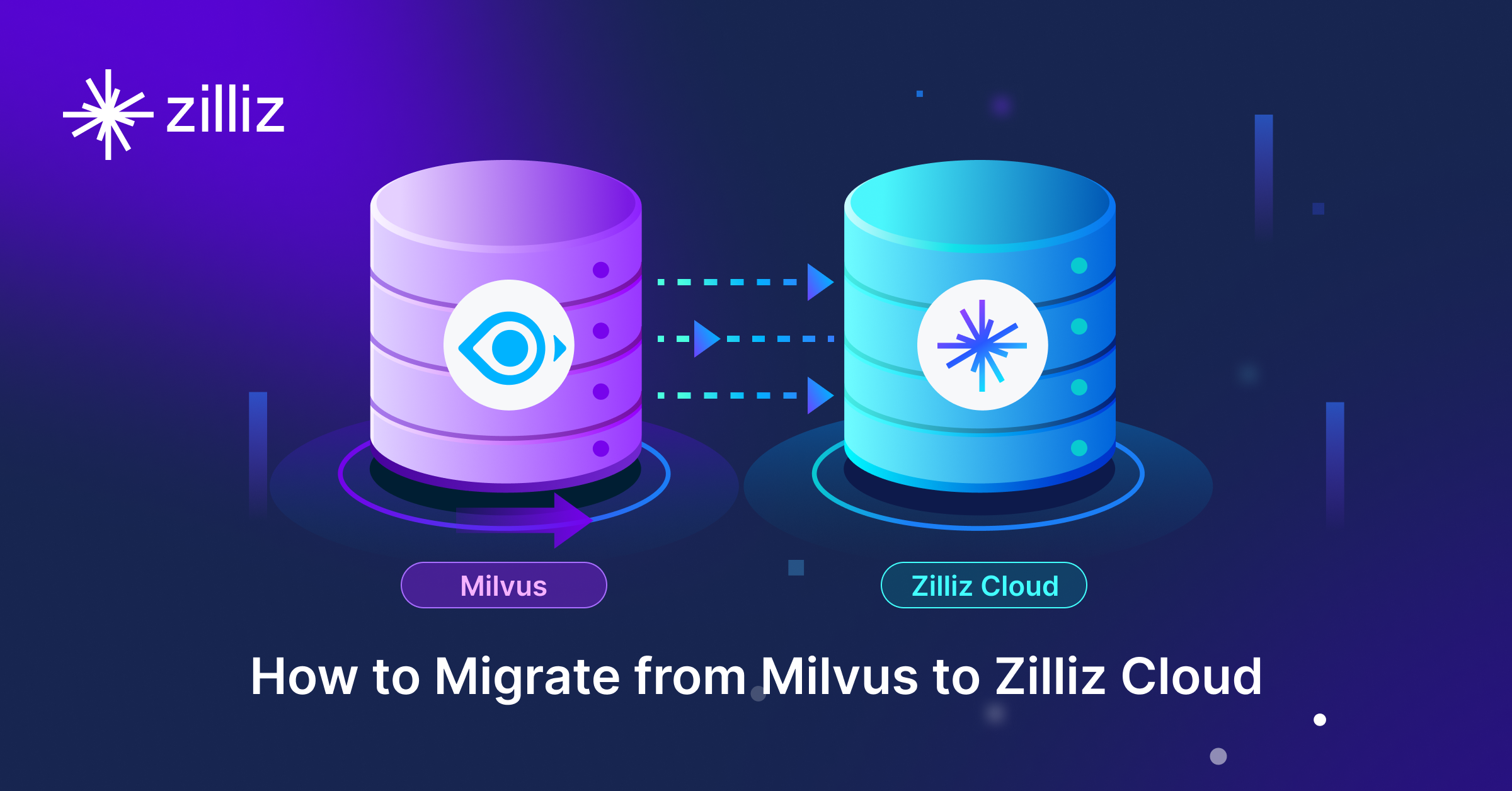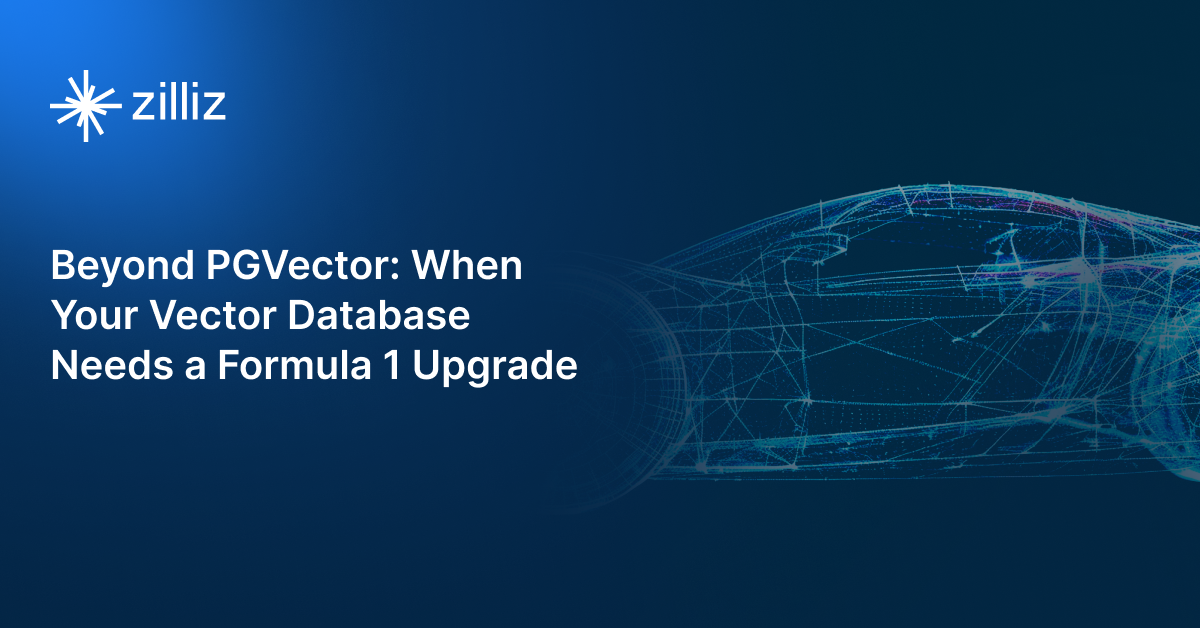LanceDB vs Neo4j Choosing the Right Vector Database for Your AI Apps

What is a Vector Database?
Before we compare LanceDB and Neo4j, let's first explore the concept of vector databases.
A vector database is specifically designed to store and query high-dimensional vectors, which are numerical representations of unstructured data. These vectors encode complex information, such as the semantic meaning of text, the visual features of images, or product attributes. By enabling efficient similarity searches, vector databases play a pivotal role in AI applications, allowing for more advanced data analysis and retrieval.
Common use cases for vector databases include e-commerce product recommendations, content discovery platforms, anomaly detection in cybersecurity, medical image analysis, and natural language processing (NLP) tasks. They also play a crucial role in Retrieval Augmented Generation (RAG), a technique that enhances the performance of large language models (LLMs) by providing external knowledge to reduce issues like AI hallucinations.
There are many types of vector databases available in the market, including:
- Purpose-built vector databases such as Milvus, Zilliz Cloud (fully managed Milvus)
- Vector search libraries such as Faiss and Annoy.
- Lightweight vector databases such as Chroma and Milvus Lite.
- Traditional databases with vector search add-ons capable of performing small-scale vector searches.
LanceDB is a serverless vector database and Neo4j is a graph database with vector search as an add-on. This post compares their vector search capabilities.
LanceDB: Overview and Core Technology
LanceDB is an open-source vector database for AI that stores, manages, queries and retrieves embeddings from large-scale multi-modal data. Built on Lance, an open-source columnar data format, LanceDB has easy integration, scalability and cost effectiveness. It can run embedded in existing backends, directly in client applications or as a remote serverless database so it’s versatile for many use cases.
Vector search is at the heart of LanceDB. It supports both exhaustive k-nearest neighbors (kNN) search and approximate nearest neighbor (ANN) search using an IVF_PQ index. This index divides the dataset into partitions and applies product quantization for efficient vector compression. LanceDB also has full-text search and scalar indices to boost search performance across different data types.
LanceDB supports various distance metrics for vector similarity, including Euclidean distance, cosine similarity and dot product. The database allows hybrid search combining semantic and keyword-based approaches and filtering on metadata fields. This enables developers to build complex search and recommendation systems.
The primary audience for LanceDB are developers and engineers working on AI applications, recommendation systems or search engines. Its Rust-based core and support for multiple programming languages makes it accessible to a wide range of technical users. LanceDB’s focus on ease of use, scalability and performance makes it a great tool for those dealing with large scale vector data and looking for efficient similarity search solutions.
Neo4j: The Basics
Neo4j’s vector search allows developers to create vector indexes to search for similar data across their graph. These indexes work with node properties that contain vector embeddings - numerical representations of data like text, images or audio that capture the meaning of the data. The system supports vectors up to 4096 dimensions and cosine and Euclidean similarity functions.
The implementation uses Hierarchical Navigable Small World (HNSW) graphs to do fast approximate k-nearest neighbor searches. When querying a vector index, you specify how many neighbors you want to retrieve and the system returns matching nodes ordered by similarity score. These scores are 0-1 with higher being more similar. The HNSW approach works well by keeping connections between similar vectors and allowing the system to quickly jump to different parts of the vector space.
Creating and using vector indexes is done through the query language. You can create indexes with the CREATE VECTOR INDEX command and specify parameters like vector dimensions and similarity function. The system will validate that only vectors of the configured dimensions are indexed. Querying these indexes is done with the db.index.vector.queryNodes procedure which takes an index name, number of results and query vector as input.
Neo4j’s vector indexing has performance optimizations like quantization which reduces memory usage by compressing the vector representations. You can tune the index behavior with parameters like max connections per node (M) and number of nearest neighbors tracked during insertion (ef_construction). While these parameters allow you to balance between accuracy and performance, the defaults work well for most use cases. The system also supports relationship vector indexes from version 5.18, so you can search for similar data on relationship properties.
This allows developers to build AI powered applications. By combining graph queries with vector similarity search applications can find related data based on semantic meaning not exact matches. For example a movie recommendation system could use plot embedding vectors to find similar movies, while using the graph structure to ensure the recommendations come from the same genre or era as the user prefers.
Key Differences
Search Technology
LanceDB uses IVF_PQ (Inverted File with Product Quantization) for vector search, partitioning data and compressing vectors. Neo4j implements HNSW (Hierarchical Navigable Small World) graphs, connecting similar vectors for fast navigation.
Data Management
LanceDB excels with vector data and supports hybrid search combining vectors with traditional search. Neo4j shines in connecting data through relationships, making it powerful for applications needing both vector similarity and graph relationships.
Performance and Scale
LanceDB's columnar format and vector compression optimize memory usage and query speed. Neo4j's HNSW implementation includes quantization and tunable parameters (M, ef_construction) to balance accuracy and performance.
Setup and Development
LanceDB runs embedded in applications or as a serverless database, with support for multiple programming languages through its Rust core. Neo4j requires more setup as a standalone database but provides a mature query language for vector operations.
Integration Options
LanceDB integrates easily with AI workflows and existing backends. Neo4j offers a broader ecosystem for traditional database operations and graph analytics.
Cost Structure
LanceDB is open-source and can run embedded, potentially reducing operational costs. Neo4j's enterprise features and dedicated hosting can increase costs but provide additional capabilities.
When to Choose Each
Choose LanceDB for AI-first applications where vector search is the main requirement, especially for embedded deployment. It’s great for recommendation systems, semantic search engines, and image similarity tools where you need fast vector operations without complex relationships. LanceDB works well in serverless architectures, mobile apps or when you want to minimize operational overhead while keeping high performance for vector searches.
Neo4j is the better choice when your application needs both vector similarity and complex relationship modeling. It’s great for knowledge graphs with semantic search, fraud detection systems combining pattern analysis with similarity search, or recommendation engines that consider both content similarity and user relationship patterns. Neo4j’s mature ecosystem is especially valuable for enterprise apps where graph relationships are as important as vector search capabilities.
Summary
The choice between LanceDB and Neo4j is simple. LanceDB is great for your application’s core requirements. LanceDB is lightweight, embeddable and optimized for vector search so it’s perfect for focused AI apps. Neo4j is powerful because it combines traditional graph database capabilities with vector search so it’s a complete solution for apps that need both relationship analysis and similarity search. Consider your deployment environment, scalability needs and whether your app needs vector operations or graph relationships when making your decision. Both are active, so evaluate the latest features against your current and future needs.
Read this to get an overview of LanceDB and Neo4j but to evaluate these you need to evaluate based on your use case. One tool that can help with that is VectorDBBench, an open-source benchmarking tool for vector database comparison. In the end, thorough benchmarking with your own datasets and query patterns will be key to making a decision between these two powerful but different approaches to vector search in distributed database systems.
Using Open-source VectorDBBench to Evaluate and Compare Vector Databases on Your Own
VectorDBBench is an open-source benchmarking tool for users who need high-performance data storage and retrieval systems, especially vector databases. This tool allows users to test and compare different vector database systems like Milvus and Zilliz Cloud (the managed Milvus) using their own datasets and find the one that fits their use cases. With VectorDBBench, users can make decisions based on actual vector database performance rather than marketing claims or hearsay.
VectorDBBench is written in Python and licensed under the MIT open-source license, meaning anyone can freely use, modify, and distribute it. The tool is actively maintained by a community of developers committed to improving its features and performance.
Download VectorDBBench from its GitHub repository to reproduce our benchmark results or obtain performance results on your own datasets.
Take a quick look at the performance of mainstream vector databases on the VectorDBBench Leaderboard.
Read the following blogs to learn more about vector database evaluation.
Further Resources about VectorDB, GenAI, and ML
- What is a Vector Database?
- LanceDB: Overview and Core Technology
- Neo4j: The Basics
- Key Differences
- When to Choose Each
- Summary
- Using Open-source VectorDBBench to Evaluate and Compare Vector Databases on Your Own
- Further Resources about VectorDB, GenAI, and ML
Content
Start Free, Scale Easily
Try the fully-managed vector database built for your GenAI applications.
Try Zilliz Cloud for FreeKeep Reading

Why and How to Migrate from Self-Hosted Milvus to Zilliz Cloud
A simple, step-by-step guide to migrating from Milvus to Zilliz Cloud. Learn both endpoint and backup methods for a smooth, scalable vector database migration.

Beyond PGVector: When Your Vector Database Needs a Formula 1 Upgrade
This blog explores why Postgres, with its vector search add-on, pgvector, works well for smaller projects and simpler use cases but reaches its limits for large-scale vector search.

Top 10 AI Agents to Watch in 2025 🚀
AI agents are like having a supercharged assistant by your side—analyzing data, making decisions, and seamlessly integrating with tools and environments.
The Definitive Guide to Choosing a Vector Database
Overwhelmed by all the options? Learn key features to look for & how to evaluate with your own data. Choose with confidence.